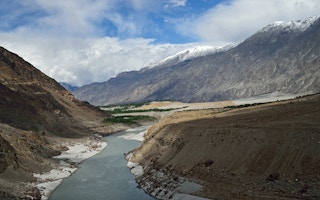Scientists have for the first time compiled a complete map of all the glaciers on Earth, providing extensive data that will help calculate sea level rise caused by global warming and the threats to communities that rely on melt water for agriculture and water supply.
The data, including length and volume, is contained in a collection of digital outlines of the world’s 200,000 glaciers − excluding the Greenland and Antarctica ice sheets.
It has been named the Randolph Glacier Inventory, after the US town of Richmond, New Hampshire, which was one of the meeting places for the group of international scientists who carried out the study as part of the fifth assessment report of the Intergovernmental Panel on Climate Change (IPCC). The study has been published in the Journal of Glaciology.
Many glaciers are in extremely remote regions, such as the Himalayas and Greenland, which has made them hard to reach − let alone measure their length and thickness. A combination of large-scale efforts by volunteers on the ground and satellite technology has overcome these difficulties, enabling 70 scientists from 18 countries to compile the maps.
Overall, the glaciers cover 730,000 square km − an area the size of Germany, Poland and Switzerland combined. The volume of ice is about 170,000 cubic km, which is less than previously thought, but still enough to raise global sea levels between 35cm and 47cm if they all melted.
“
Some of the most populous areas on earth, such as China, India and Pakistan, rely on melt water from glaciers for agriculture. At present, glaciers still provide plenty of summer water, but in many cases they are melting faster than winter snows are replenishing them. If this continues, the summer water flow will eventually cease, leading to calamity for the human populations that rely on them
Sea level rise
Although this is less than one per cent of the amount of water stored in the Greenland and Antarctica icecaps, it matters because most of the glaciers are melting now, actively adding to sea level rise. The two big icecaps are so cold inside that it will be thousands of years before the ice temperature rises enough to reach melting point.
Some of the most populous areas on earth, such as China, India and Pakistan, rely on melt water from glaciers for agriculture. At present, glaciers still provide plenty of summer water, but in many cases they are melting faster than winter snows are replenishing them. If this continues, the summer water flow will eventually cease, leading to calamity for the human populations that rely on them.
This is already happening in some parts of the Andes in South America, with some smaller glaciers having disappeared. The impact affects, for example, some wine-growing regions that rely on melt water for their vines.
There are still uncertainties about some of the measurements because, in some cases, glaciers are covered in debris as they move down mountains, while others are obscured by snow, making measurements of thickness more difficult.
Each glacier in the new inventory is represented by a computer-readable outline, making precise modelling of glacier-climate interactions much easier.
Glaciers currently add about one-third to existing sea level rise − about the same amount as the two giant ice sheets. The remaining third is the result of thermal expansion of the oceans as they warm.
Speed of retreat
In countries such as Switzerland, where the health of glaciers is vital for tourism, the speed of their retreat has been closely monitored. The melting is also important because it causes landslides, as well as impacting on water supply.
“The rapid shrinking of glaciers during the past 20 years is well recognisable in the Alps and other parts of the world,” said Frank Paul, a senior researcher in the University of Zurich’s Department of Geography and a co-author of the study.
Tobias Bolch, a researcher at the Institute for Cartography at the Technische Universität Dresden, Germany, is another co-author of the study. He said: “Here and in other parts of the world glaciers also impact on the regional to local-scale hydrology, natural hazards, and livelihoods in otherwise dry mountain regions.
“Accurate knowledge of water reserves and their future evolution is thus key for local authorities for early implementation of mitigation measures.”










